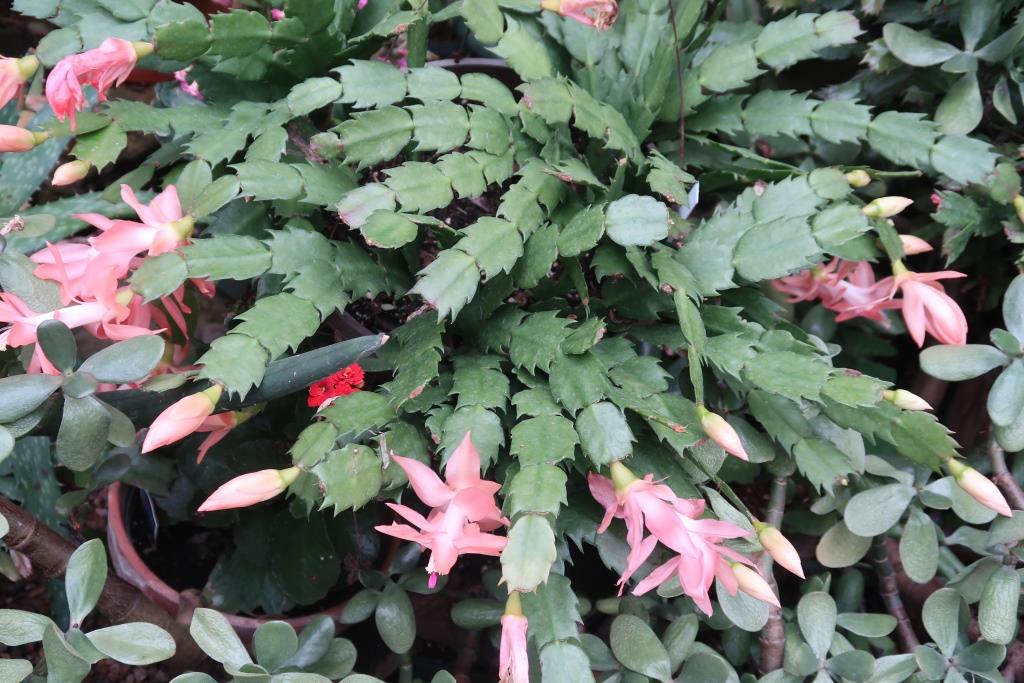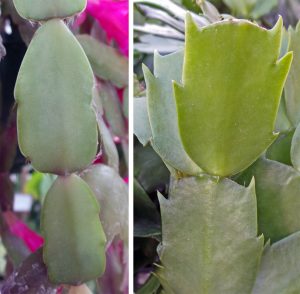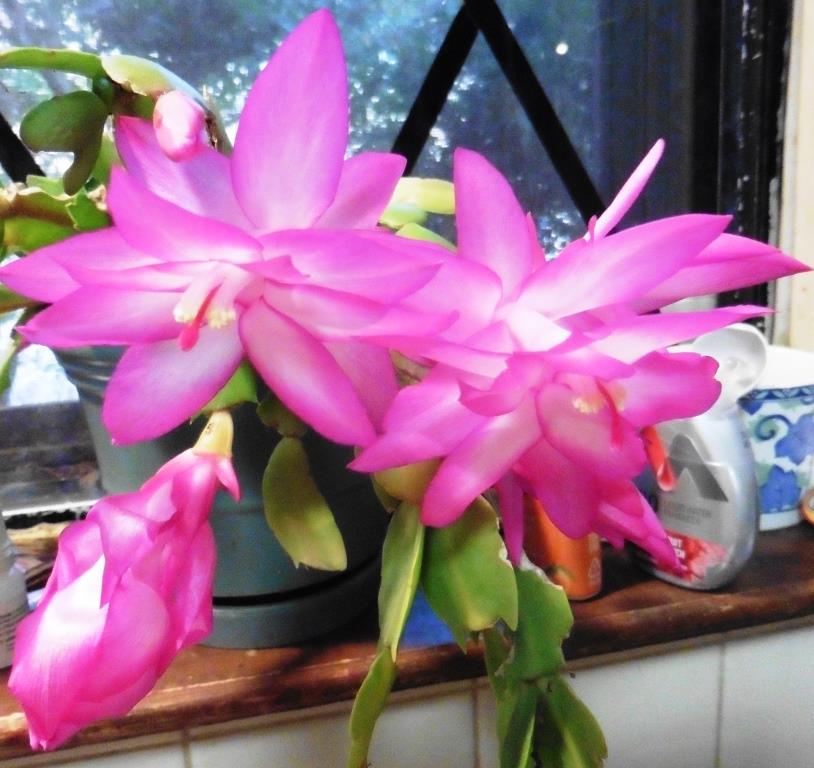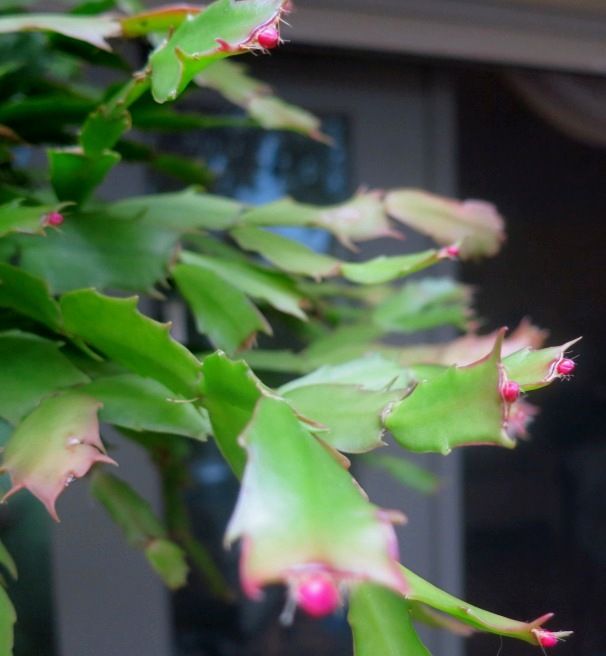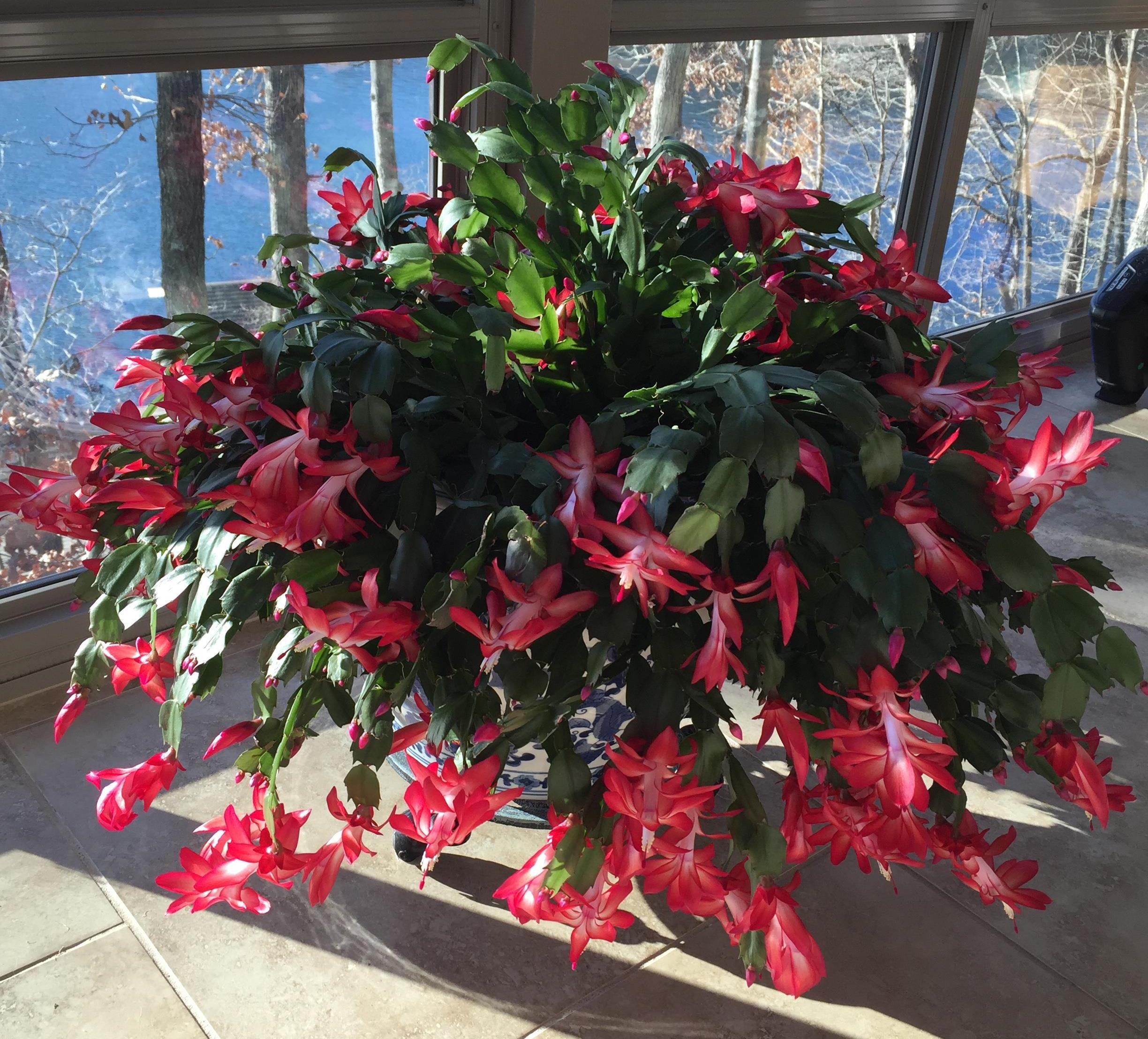If you are looking for a houseplant that can bloom annually for the holidays, consider a holiday cactus.
The holiday cactus is in the Schlumbergera family, a small family of cactus with only six species, including the holiday cactus Schlumbergera truncata and the true Christmas cactus Schlumbergera x buckleyi. Schlumbergera truncata, (synonymous with zygocactus) is the cactus sold now as Thanksgiving or Christmas cactus. If it is in bloom in November we call it a Thanksgiving cactus, if it is in bloom in December, we call it a Christmas cactus. It is also called crab or claw cactus because of the crab-like appendages on the flat leaf-like segments.
The true Christmas cactus, Schlumbergera x buckleyi has rounded leaf margins, and can be a bit more difficult to get to rebloom, so it is not as popular.
Schlumbergera are true cacti native to Brazil. This family of cacti are epiphytic plants found growing in the rain forest, sharing space with orchids and bromeliads, not in sandy, dry deserts. Instead of barrel shaped plants with deadly thorns, these plants have wide flat, segmented succulent leaf‑like branches and produce colorful multi-petaled flowers. The flowers come in a wide variety of colors: red, purple, peach, orange,
pinks and creams. Most holiday cacti now in cultivation are hybrids, and can bloom over an extended period of time.
The holiday cactus is thermo-photo-periodic in their flowering requirements-- meaning they are affected both by day length and temperature. The secret of good blooms is to maintain proper temperature and light control, but temperature is most important. Holiday cactus will develop buds and bloom if given bright light, short days (of less than 12 hours of light per day), and night temperatures less than 70 F, (preferably between 55 and 65 F.) If they are left outdoors in the fall, they get the shorter days and cooler temperatures naturally, and set a copious amount of flower buds. If the temperature is lower than 55- 60°F (but not below freezing) plants set flower buds regardless of the length of the day or night. This can explain the phenomenon of them re-blooming in February and March. The plants should never be exposed to freezing temperatures. After exposure to cool temperatures and short days for six weeks, flower buds are produced.
If you treat your plant as a houseplant year-round and keep your house at 70 degrees or above, you will probably never see a bloom. It needs the cool period to set flower buds.
The holiday cactus grows best in a lightweight, well-drained potting soil---they don’t like heavy wet soil. Holiday cacti bloom best when they are slightly pot bound. Repotting is necessary only about once every two to three years, and then gradually increase pot size.
As the blooms develop, give the plant a bright sunny window.
Avoid exposing the plant to drafts, or extremely high temperatures. Flower buds can drop off if the temperature is too high or humidity is too low.
After the plant finishes blooming, place it in a room where it can receive some direct light. Poor light promotes bud drop and poor growth after flowering. Full sun is beneficial in midwinter indoors, but full sun during summer months can make plants look pale and yellow. These plants grow naturally outdoors shaded by a canopy of leaves. If you have older plants that haven’t bloomed yet this year and have no sign of flower buds, or your cactus has already finished blooming and you would like more flowers, move the plant to a very cool room of your house with bright light, or place them near a cool window. Even a sun porch or garage with a window may work—as long as they don’t freeze. If the plant receives 6 weeks with temperatures between 55 and 65, you should have a blooming plant.
